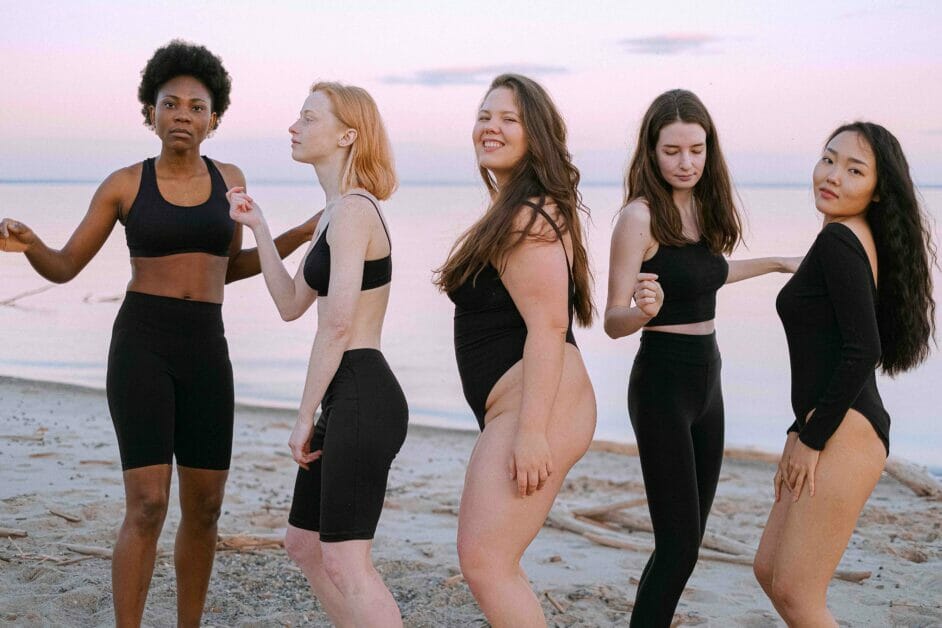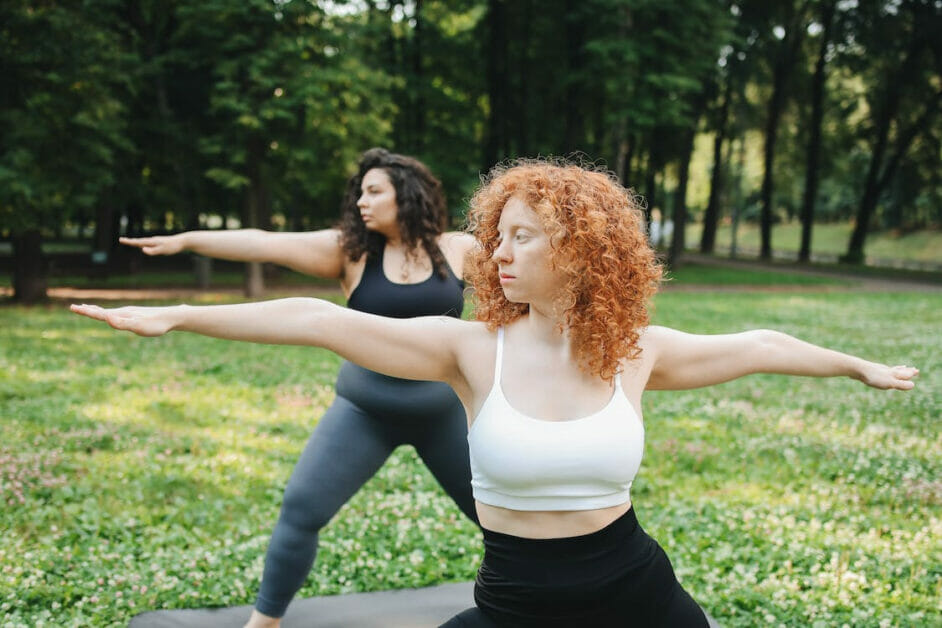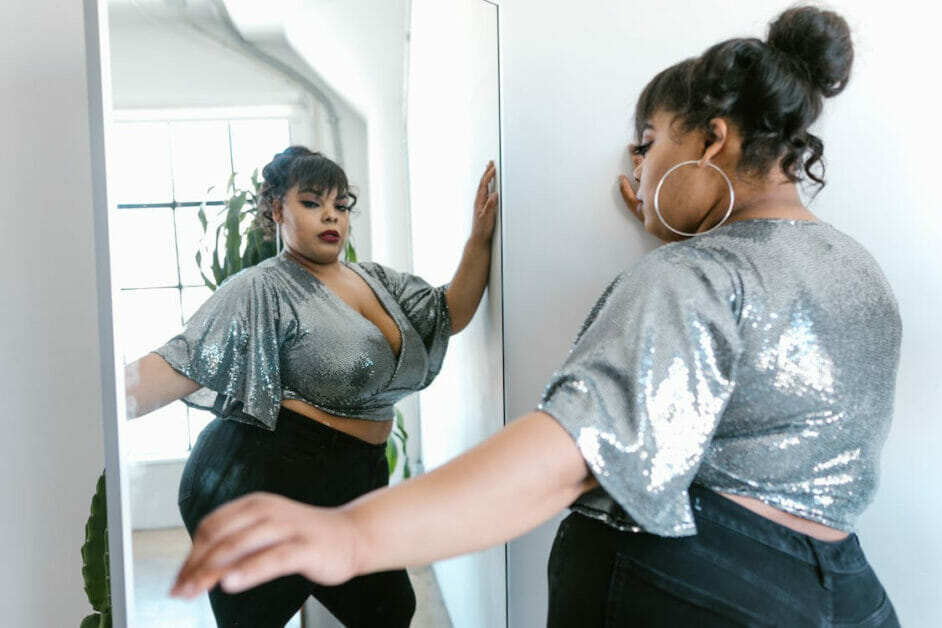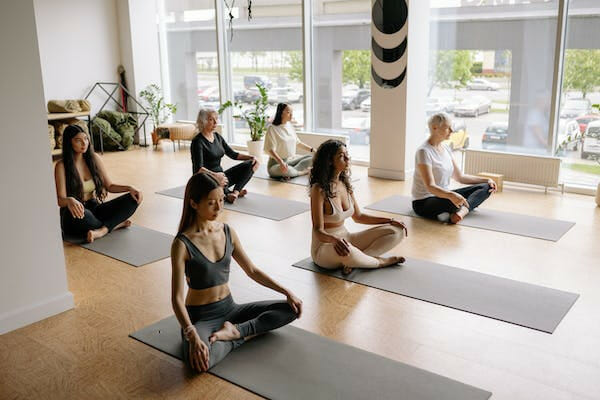
Body Positivity Activities: Boost Your Confidence
Do you struggle with body image issues and low self-esteem? Well, you’re not alone. It’s no secret that social media and advertising present a narrow definition of beauty.
The pressure to conform to unrealistic beauty standards can be overwhelming, leading to decreased confidence and a distorted perception of oneself.
Nonetheless, incorporating body-positivity activities into your daily routine can build resilience against negative messages about your body and help you develop a more positive outlook.
Whether you struggle with body image issues or want to feel more confident, these activities can be a great way to learn to appreciate your body and focus on what makes you unique and special.
What is Body Positivity?
Body positivity is a movement that promotes the idea that everyone should have a positive body image, regardless of their size, shape, or appearance.

It emphasizes self-acceptance, inner worth, and appreciation for one’s body. This movement encourages individuals to focus on the positive aspects of their bodies rather than the negative.
Body Positivity Activities for Individuals
Self-Love and Self-Care Practices
Taking care of yourself is one of the most important things you can do for your body and mind.

Start by practicing self-love and self-care activities such as relaxing bubble baths, massage, or indulging in your favorite hobby. Remember that self-care is not selfish; it’s necessary for your overall well-being.
Here’s how you can do it:
- Plan: Set aside a day on your calendar and plan for it. This can help you mentally prepare and ensure you have everything for your self-care day.
- Choose activities: Think about activities that you enjoy and that make you feel good. This could include taking a long bath, walking in nature, doing yoga or stretching, reading a book, listening to music, or watching your favorite movie.
- Create a relaxing atmosphere: Set the mood for your self-care day by creating a relaxing atmosphere. This could include lighting candles, playing soothing music, or diffusing essential oils.
- Disconnect: Consider disconnecting from technology for the day or limiting your use. This can help you be present and fully engaged in your self-care activities.
- Nourish your body: Take care of it by nourishing it with healthy foods and drinks. Consider making yourself a nutritious meal, smoothie, or a healthy snack.
- Practice gratitude: Take some time to reflect on the things you’re grateful for in your life. This can help shift your focus to the positive and improve your overall mood.
- Rest and recharge: Allow yourself plenty of time to rest and recharge. This could mean taking a nap, meditating, or simply taking some quiet time.
Remember, self-care doesn’t have to be complicated or expensive. It’s simply about taking time to recharge and prioritize your well-being. Enjoy your self-care day!
Mindful Eating Habits
Mindful eating can help you develop a positive relationship with food and your body.

Instead, focus on nourishing your body with healthy, delicious foods that make you feel good.
Here’s how you can do it:
- Keep a food journal: Start by keeping a food journal for a week. Write down what you eat, when, and how you feel before and after eating. This can help you identify patterns in your eating habits and recognize when you’re truly hungry versus eating for other reasons, like boredom or stress.
- Incorporate healthy foods into your diet: Make a list of healthy foods you enjoy and feel good about. Start incorporating these foods into your meals and snacks, and gradually reduce your intake of processed and unhealthy foods.
- Eat when you’re hungry: Pay attention to your body’s hunger cues and eat when you’re truly hungry, rather than following a strict eating schedule or restricting your calories. This will help you develop a more positive relationship with food and your body.
- Stop when you’re satisfied: Learn to recognize when you’re satisfied rather than feeling stuffed or uncomfortable. Stop eating when you’re satisfied, even if there’s still food on your plate.
- Practice self-compassion: Remember that developing healthy eating habits is a process, and it’s okay to make mistakes or have setbacks. Practice self-compassion and be kind to yourself as you navigate this journey.
By practicing these habits, you can improve your overall health and well-being.
Exercise and Movement
Exercise and movement are great ways to boost your mood and body image. Find an activity you enjoy, whether it’s yoga, dancing, or hiking, and make it a regular part of your routine.

Here’s how you can do it:
- Set realistic goals: Start by setting realistic exercise goals for yourself. This could be as simple as committing to a 20-minute walk daily or working towards a specific fitness goal, like completing a 5K race.
- Create a plan: Once you have your goals, plan how to achieve them. This could include scheduling specific workout times, finding a partner, or joining a fitness class.
- Start small: If you’re new to exercise or haven’t worked out in a while, start with small, achievable goals. This will help you build confidence and avoid burnout.
- Mix it up: Variety is key to staying motivated and engaged with your exercise routine. Mix your workouts with activities like strength training, yoga, or cycling.
- Find accountability: Find a workout partner or join a fitness group to help keep you accountable and motivated. This can also make exercise more fun and social.
- Track your progress: Keep track of your progress, whether it’s through a fitness app or a written log. Celebrate your successes and use setbacks as motivation to keep going.
- Focus on the benefits: Instead of focusing solely on weight loss or physical appearance, focus on the many benefits of exercise, like improved mood, energy, and overall health.
Remember that exercise should be fun and not a punishment for your body.
Positive Affirmations and Mirror Work
Positive affirmations and mirror work can help you develop a more positive body image. Start by looking at yourself in the mirror and saying positive affirmations such as “I am beautiful” or “I am strong.”

Repeat these affirmations daily to help boost your confidence and self-esteem. Remember that body positivity is a journey, and it’s okay to have bad days. Be kind to yourself and practice self-compassion.
With time and practice, you can develop a more positive relationship with your body and learn to love yourself just as you are.
Here’s how you can do it:
- Find a mirror: Find a quiet and private space to stand before a mirror. It could be a full-length mirror or just a small one.
- Get comfortable: Stand in front of the mirror and get comfortable with your reflection. Take a few deep breaths and relax your body.
- Look into your eyes: Look into your own eyes in the mirror. Take a moment to connect with yourself.
- Start affirming: Begin to say positive affirmations to yourself, out loud or in your mind. Choose affirmations that resonate with you, such as “I am worthy,” “I am confident,” “I am loved,” “I am capable,” “I am enough,” or any other affirmations that make you feel good.
- Repeat the affirmations: Repeat each affirmation several times while looking into your eyes in the mirror. Feel the truth of each statement as you say it.
- End on a positive note: End with a final affirmation summarizing your positive feelings towards yourself. For example, “I am beautiful, inside and out,” or “I am grateful for my amazing qualities.”
- Practice regularly: Try to make this a daily practice. The more you practice, the more you strengthen your positive self-image and self-love.
Remember to be patient and kind to yourself. Mirror affirmations can be challenging at first, but with practice, they can become a powerful tool to improve your relationship with yourself.
Practical Ways to Incorporate Body Positivity Into Your Daily Routine
Incorporating body positivity into your daily routine can help you develop a more positive relationship with your body and promote overall well-being. Here are some ideas for how to do so:
| Body Positivity Daily Routine |
|---|
| Morning |
| Start the day with a positive affirmation about your body. |
| Choose an outfit that makes you feel confident and comfortable. |
| Prioritize rest by taking a warm bath or practicing a calming bedtime routine. |
| Enjoy a healthy breakfast that nourishes your body and fuels your day. |
| Afternoon |
| Take a break from work or other responsibilities to practice self-care, such as meditation, journaling, or listening to music. |
| Reframe negative thoughts about your body by focusing on its strengths and abilities. |
| Take a walk outside to get some fresh air and movement. |
| Evening |
| Prioritize rest by taking a warm bath or practicing a calming bedtime routine. |
| Practice gratitude by reflecting on things your body allows you to do throughout the day. |
| Practice gratitude by reflecting on things your body allows you to do throughout the day. |
Remember, developing a positive relationship with your body is a journey that won’t happen overnight. But by incorporating these practices into your daily routine, you can take steps towards feeling more confident, happy, and comfortable in your own body.
Body Positivity Activities for Groups
If you’re looking to boost your body positivity in a group setting, there are plenty of activities to try.
Whether you prefer yoga, support groups, community events, or social media challenges, there’s something for everyone.
Here are some ideas to get you started:
Body Positive Yoga Classes
Yoga is a great way to connect with your body and practice self-love. Look for classes focusing on body positivity and offering modifications for all body types.

Some studios even offer classes specifically for plus-size yogis. Practicing yoga in a supportive and inclusive environment can help you feel more confident and comfortable in your skin.
Support Groups and Workshops
Finding a supportive community can be a game-changer for body positivity. Look for support groups or workshops in your area that focus on body acceptance and self-love.

These groups can provide a safe space to share your struggles and triumphs with others who understand what you’re going through. You may even make some new friends who share your values and goals.
Community Events and Body Positivity Campaigns
Many communities host events and campaigns that promote body positivity and self-love. Look for local events like body-positive fashion shows, body-positive art exhibits, or fitness classes.

These events can be fun to connect with others who share your values and celebrate all bodies. You may even discover new ways to express yourself and feel more confident in your skin.
Social Media Challenges and Hashtags
Social media can be a powerful tool for promoting body positivity and self-love. Look for challenges and hashtags that encourage body acceptance and inclusivity.

You might try a “no-makeup selfie” challenge or participate in a hashtag like #effyourbeautystandards or #bodypositivity.
Sharing your journey can inspire others and help you feel more connected to a larger community of body-positive individuals.
Why is Body Positivity Important?
Body positivity is important because it promotes self-love and acceptance. It also helps to combat negative body image, which can lead to unhealthy behaviors such as disordered eating and depression.
Body positivity is about accepting your body and others’ bodies. It encourages individuals to be kind and supportive of others, regardless of their size or appearance.
By embracing body positivity, you can improve your mental and physical health and help create a more accepting and tolerant society.
Wrapping Up
Body positivity is not just about physical appearance. It’s also about your inner worth and appreciating all the amazing things that make you who you are.
So, be kind to yourself and focus on your strengths rather than weaknesses. Ultimately, body positivity is a journey that requires patience, self-love, and a willingness to embrace your uniqueness.
Remember that there’s no “right” way to practice body positivity. The most important thing is to find activities that make you feel good and help you positively connect with your body.
By practicing positive body image activities and surrounding yourself with love and positivity, you can learn to love yourself and your body just as it is.
References
Studies:
- Targets of comparison and body image in women’s everyday lives: The role of perceived attainability: https://pubmed.ncbi.nlm.nih.gov/33932884/
- The Effects of Perception of Body Shape, Self-esteem, Body Cathexis, and Body Image on Fashion Leadership by Korean and Japanese Female College Students: https://www.researchgate.net/publication/263631294
Organizations:
- Project Heal: https://www.theprojectheal.org/
- Embrace: https://bodyimagemovement.com/embrace/
Books:
- “The Body Is Not an Apology” by Sonya Renee Taylor
- “Body Positive Power” by Megan Jayne Crabbe
- “The Self-Love Experiment” by Shannon Kaiser
Websites:
- Center for Body Trust: https://centerforbodytrust.com/
- Body Kindness: https://www.bodykindnessbook.com/